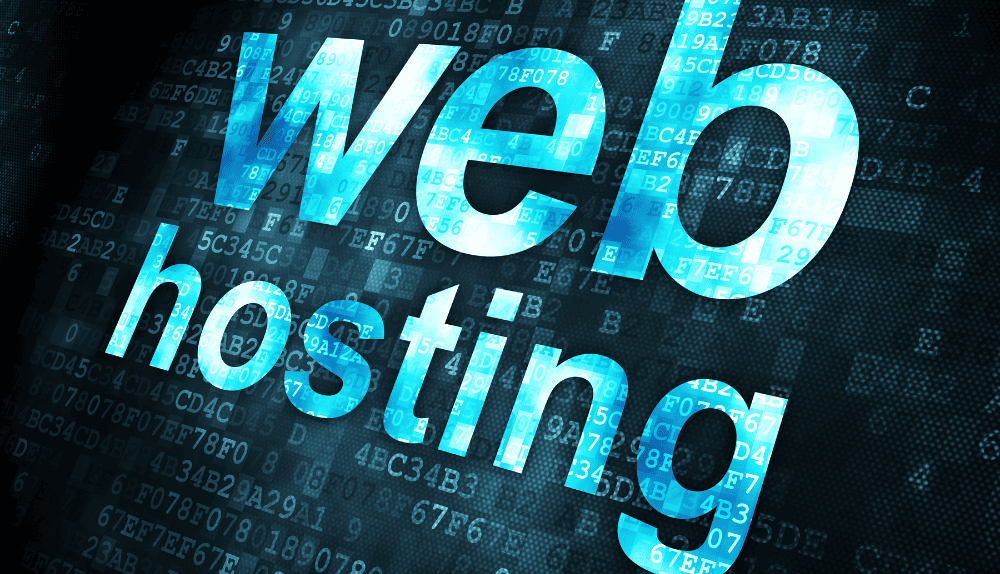- 12th Jul, 2023
- No Comments
What is cPanel? How Do You Use It in WordPress Hosting?

Controlling the hosting of a WordPress website is somewhat of a complex task. However, what if you get to do that with a little more than a few mouse clicks?
Well, as of now, only a centralized system can help you accomplish that. And that system is cPanel.
Undoubtedly, cPanel is the best tool out there that can make the WordPress hosting of your site easy and efficient.
It allows you to control all the facets of a website, including its content, security, website traffic, controlling users, etc.
cPanel is a game-changer for how webmasters manage their servers. It is the most popular and most used web hosting control panel due to its intuitive layout and robust set of functions.
However, up to what extent can it be utilized for your site’s WordPress hosting? Let’s find out!
What Exactly is cPanel Hosting in WordPress?

Managing a website’s hosting account is very easy with the web-based cPanel. It is user-friendly and allows the management of files of a website, the complete domain, the site’s database, connected email accounts, and the security settings of the website.
Many WordPress site owners around the world use cPanel as their primary control panel. What makes it so popular is its intuitive layout that is easy to use for both beginners and advanced webmasters.
Key Features of cPanel
1. Security Settings
cPanel allows you to configure various security settings for your website, including managing SSL certificates, setting up password-protected directories, enabling firewalls, and managing IP address access restrictions.
2. Domain Management
You can add, remove, and manage domain names linked with your hosting account. It includes creating subdomains, managing DNS (Domain Name System) settings, and configuring domain redirects.
3. File Management
cPanel allows you to upload, download, organize, and edit files on your website using a web-based file manager or FTP (File Transfer Protocol).
4. Database Management
It provides tools for creating and managing databases, such as MySQL or PostgreSQL. You can create and delete databases, manage user privileges, and access popular database management tools like phpMyAdmin.
Pros and Cons of cPanel Hosting
cPanel is perfect for newcomers seeking a user-friendly solution to manage their websites.
Nonetheless, akin to other hosting control panels, cPanel has its own pros and, on the other hand, has cons also.
Pros of cPanel
· Compatible with Web Browsers
cPanel works seamlessly with various web browsers like Safari, Chrome, and Firefox. Plus, cPanel goes the extra mile by supporting a range of other applications, including handy website building tools and essential SEO tools.
· User-friendly
The interface of cPanel is designed to organize a range of features into user-friendly modules, ensuring easy accessibility for users. Navigating the cPanel dashboard is easy, thanks to its intuitive menus and visually appealing graphics.
· Multiple features
With cPanel, you don’t need any advanced technical knowledge to handle complex tasks. It empowers users to effortlessly create FTP accounts and subdomains, management of database of MySQL, and generate reliable site backups.
· Good customer support
The cPanel community offers a wealth of resources, providing a plethora of information. Additionally, you can access dedicated technical manuals for both cPanel and WHM, which serve as comprehensive guides. These manuals are designed to assist you in understanding how to effectively utilize cPanel products and address any potential issues that may arise.
Cons of cPanel
- Data loss risk
Occasionally, you might encounter situations where the cPanel system inadvertently overwrites server configurations and erases all data while undergoing significant updates.
This unfortunate occurrence is often a result of a hard drive crash or failure. During such circumstances, it becomes imperative to initiate a comprehensive disaster recovery process in order to successfully reinstate your web server.
- Vulnerable Security
The 2FA authentication of cPanel is weak and might be vulnerable to hacking and malware attacks. Regularly updating your cPanel can effectively enhance security measures and protect against such threats.
Using cPanel for a WordPress site: A Step-by-Step Guide

1. Access cPanel
Obtain the login details for cPanel account from the web hosting provider. Visit “yourdomainname.com/cpanel”.
2. Log in to cPanel
Enter your cPanel login details to log in.
3. Create a database
In cPanel, search for “MySQL Databases” or a similar option. Create a new database by entering a name and clicking “Create Database.” Remember the database name, as you will need it during the WordPress installation process.
- Create a database user
In the same section, scroll down to “MySQL Users” and create a new user. Set a new username and new password, and click “Create User.”
- Assign the user to the database
Get to the “Add User to Database” section. Select the previously created user and database from the dropdown menus, and click “Add.” On the next page, grant all privileges to the user by ticking the “All Privileges” checkbox. Click “Make Changes” or “Add” to save the changes.
- Download WordPress
Visit the official WordPress website (https://wordpress.org) and download the latest version of WordPress. Extract the ZIP file that was downloaded to your local computer.
- Upload WordPress files
The “File Manager” option may be accessed from cPanel once more. To install WordPress, open it and go to the directory labeled “public_html” or “www” (or the directory you like). To upload the WordPress files you just extracted, click the “Upload” button. When the transfer is finished, you can exit the File Manager.
- Install WordPress
Click on your website’s address (www.example.com) in a web browser to access it. Initiating the WordPress installation procedure will be shown to you. Select your language of choice and press “Continue.”
- Configure WordPress
The following page will ask for the database details you just established. Indicate the database’s host (often “localhost”), username, and password. If you don’t have a good reason to modify the table prefix, stick with the default. Simply select one of the two buttons labeled “Submit” and “Install WordPress” to continue.
- Complete installation
Fill in the site title, desired username, password, and email address to get the WordPress administrator account. Optionally, you can discourage search engines from indexing your site during development. Click “Install WordPress” or “Finish” to complete the installation.
- Access the WordPress admin area
Once the installation finishes, you will see a success message with a link to the WordPress admin area. Click the link or manually visit www.example.com/wp-admin (replace “example.com” with your actual domain).
- Explore cPanel features
While WordPress provides its own administration interface, you can still utilize various cPanel features to manage your hosting account, domains, email accounts, databases, and more. You can return to cPanel at any time by accessing your hosting provider’s cPanel login page.
What is the Purpose Does cPanel Serves?
cPanel offers several purposes and functionalities that can enhance the WordPress website hosting experience. Here are some of the main purposes for which you must use cPanel:
1. Website Management
cPanel provides a range of tools to manage the WordPress website. File Manager can be used to upload, edit, and manage files directly on your server. It allows you to create and organize folders, modify file permissions, and make quick edits to your WordPress files if needed.
2. Domain Management
cPanel allows you to manage the domain names linked with your hosting account. You can add new domains, create subdomains, set up domain redirects, manage DNS settings, and control domain-specific email accounts. It provides a user-friendly interface to handle all your domain-related tasks.
3. Email Management
cPanel makes it easy to set up and administer email services for your website’s users. You may create business-like email addresses (like info@yourdomain.com) and forward messages to other addresses. cPanel now has webmail interfaces for checking and managing email from within a web browser.
4. Database Management
Tools for handling your WordPress database are available in cPanel. New databases, database users, and permissions can all be made. You can manage your database tables, run queries, create backups, and restore databases with the help of programs like phpMyAdmin.
5. Security Settings
You can safeguard your WordPress site with the tools available in cPanel. Secure HTTPS connections may be enabled for your site by managing SSL certificates. You may use it to create encrypted folders that only authorized users can access. You may make your hosting environment safer by restricting access to specific IP addresses, turning on firewalls, and managing other security-related settings.
6. Backup and Restore
You may generate full or partial backups of the website with the use of cPanel’s backup and restore features. Scheduled backups can be kept on the server or downloaded to your machine for further security. The cPanel interface makes it simple to restore your website from a backup in the event of problems or data loss.
7. Resource Management
Your hosting account’s resources can be tracked and managed with cPanel’s handy interface. Your website’s CPU, memory, and disk space consumption may all be monitored. It aids in pinpointing the source of any slowdowns in your WordPress site’s performance.
8. Application Installation
WordPress and other popular programs may be installed with a few clicks using a function in cPanel called “Softaculous.” It streamlines the setup procedure and guarantees that your WordPress site will be live in no time.
Tips for Securing Your cPanel
In order to keep your website, data, and hosting environment safe, securing your cPanel is essential. How to achieve that is as follows:
1. Use Strong Passwords
Password-protecting the cPanel account requires special care. Passwords should be difficult to guess; thus, it’s best to use a mix of capital and lowercase letters, numbers, and symbols. Passwords should be changed often and never shared.
2. Enable Two-Factor Authentication (2FA)
Enable two-factor authentication for the cPanel account if it is supported. 2FA adds an extra security by enabling a second verification step, such as a passcode sent to mobile device.
3. Keep cPanel Updated
Regularly update cPanel to the latest version available. Newer versions often include security patches and bug fixes that address vulnerabilities. Many hosting providers automatically handle cPanel updates, but you should verify that you have the latest version.
4. Manage Access Permissions
Be cautious about granting access permissions to different users and applications within cPanel. Only provide necessary access to specific individuals or services, and regularly review and remove unnecessary privileges.
5. Secure File and Directory Permissions
Ensure that file and directory permissions are properly set to prevent unauthorized access. Follow the principle of least privilege, granting the minimum necessary permissions to files and directories. Be mindful of directories containing sensitive data or configuration files.
6. Use a Firewall
Consider enabling a firewall on your cPanel server to restrict incoming and outgoing network traffic. You can use the built-in firewall features in cPanel or implement a third-party firewall solution.
7. Implement IP Address Restrictions
Configure IP address restrictions to allow access to cPanel only from trusted IP addresses. It adds extra protection by limiting access to the control panel to specific IP addresses or IP ranges.
8. Regularly Backup Your Data
Set up regular backups of the website and databases using cPanel’s backup functionality or a backup plugin. Store backups securely offsite, either on another server or on your local computer. Regular backups can help you recover your data in case of any security incidents or data loss.
9. Monitor Logs
Regularly monitor your cPanel logs for any suspicious activities or errors. Pay attention to access logs, error logs, and security logs to identify any potential security breaches or unusual behavior.
10. Keep Software Updated
Keep all the software, including your website’s CMS (e.g., WordPress) and its plugins/themes, up to date. Regularly check for updates and apply them promptly.
11. Implement SSL/TLS Certificates
Enable SSL/TLS certificates for your website to encrypt communications and secure sensitive data transmitted between your website and visitors. You can generate and install SSL certificates directly from cPanel or use a third-party SSL provider.
Conclusion
cPanel is typically based on Linux web hosting.
It allows access to a wide array of modules, such as Preferences, Files, Databases, Domains, Web Applications, Security, Metrics, Software, and Email.
What sets cPanel apart is its user-friendliness and simple interface, which have cemented it as prominent option.
Handling a website with cPanel becomes easy. You can effortlessly manage files of your website and carry out various tasks with ease.
